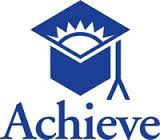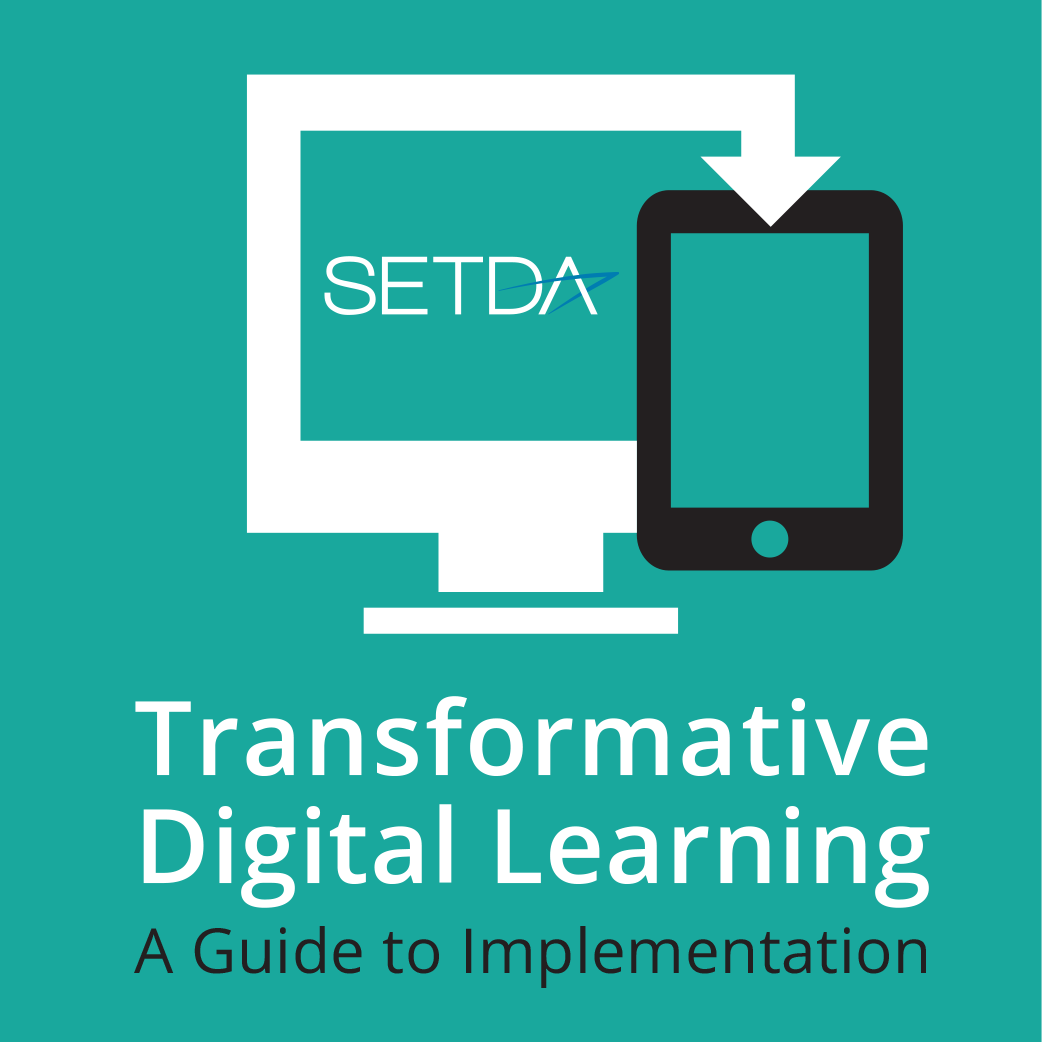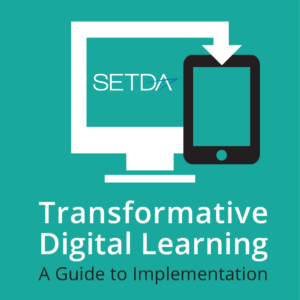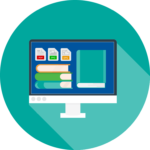

Budget
Facilitator Guide
The Facilitator Guide – Budget provides education leaders with the information and resources they need to conduct a professional learning session. Participants will:
- Learn more about budgeting for digital learning
- Collaborate with colleagues on key questions related to digital learning budgets
- Acquire resources to support budget planning and considerations
- Develop and maintain relationships with other district and state leaders
Resources
Technical Requirements
Test Configurations
The best way to confirm that digital content will work on any given computing device or operating system is to try as many combinations as possible. Put together a “test kit” that combines each type of computing device, its system software and a sample of the content and allow users to interact with the content to uncover the unexpected “gotchas.”
Resources
Technical Requirements
Technical requirements to consider when selecting and implementing digital instructional materials and resources include: Content Format. The evaluation process for digital content should include making note of the formats the content is available in and the operating systems and internet browsers it is compatible with. It is important to monitor the minimum and recommended device specifications to make the best use of the digital content provided by the content publisher. If the content is not “device agnostic,” what are the tradeoffs you might be forced to make? (For example, if your school has a BYOD program, will all students be able to access and have the same experience with that content as somebody using a school-supplied device?) Content Access. Decide what type of content access is preferred and then determine how the licensing and copyright considerations address those preferences. Can the digital content be saved to computing devices, made available online, or both? Is internet access required to see and interact with the content? Can the content follow the user and adapt to the device being used at the moment? Interoperability. How will the digital resources connect with current and future resources. Does the vendor follow appropriate standards-based data definitions? Does the software allow for sharing of information across applications? Does the software enable the search, alignment and discovery of digital content? Learn more in the Interoperability section. Broadband. Some digital content relies on the use of streaming video or high definition visuals. Are the plans for acquisition of digital content in sync with plans to expand the broadband access coming to the building as well throughout the building? Learn more about broadband and Wi-Fi in the Equity & Access section. Accessibility. How are the needs of students with disabilities and English language learners addressed by the technology and the content? What are the advantages and disadvantages of the content for these students? At the most basic level, is the content accessible? Additionally, does it provide the supports and scaffolds to support independent learning by a diverse student population?Selection
Selection
There’s a growing body of research finding that instructional materials can have as large an impact on student outcomes as teacher quality or reduced class size. Developing a process for the selection and implementation of quality instructional materials is more important than ever with the growing number of available resources for both core courses and supplemental materials. Options may include a full core course replacement for a specific content area or supplemental materials to support the core materials.Key Considerations
- Assemble a review team
- Review existing course content
- Select materials
- Curate materials
Quality Content Guide
Learn more about best practices for selecting quality instructional materials, aligned to standards for both core curriculum and supplemental materials in SETDA’s Quality Content Guide. Find rubrics and tools used by states, districts, and schools for the evaluation instructional materials.
Resources
-

Curriculum Associates’ The Science Behind i-Ready’s Adaptive Diagnostic
Curriculum AssociatesThis resource provides an overview of adaptive assessments and the Curriculum Associates’ i-Ready adaptive assessment tool.
-

OER in Action: Implementation Case Studies
SETDA’s online OER case studies demonstrate how the policies and practices at the state level have provided the avenue for the implementation of OER materials in New York, Utah, and Washington.
-

OER Rubrics
AchieveDeveloped by the non-profit organization Achieve, these rubrics were created to evaluate open educational resources, but they can be applicable to any content.
-

Open Professionals Education Network (OPEN)
Open Professionals Education Network (OPEN)Open Professionals Education Network (OPEN) provides links to OER as well as guidance on how to handle licensing requirements for education-oriented digital materials
Digital Transformation
Key Components
- Policies: In every state that has made a big push for the use of digital content in schools, legislators updated how their states legally define “textbook” and “instructional materials”
- Leadership: State and local leadership buy-in. The most critical part of a successful digital learning transformation state and local leadership buy-in. Leaders can communicate the vision to multiple stakeholders and ensure the appropriate resources are in place to carry it out.
- Sustainable Funding: States and districts need to ensure sustainable funding for devices, infrastructure and digital instructional materials and resources.
Resources
- The Accessibility of Learning Content for All Students, Including Students with Disabilities, Must Be Addressed in the Shift to Digital Instructional Materials
- CDWG’s How to Transition from a Print to Digital Curriculum (sponsored resource)
- Out of Print: Reimagining the K-12 Textbook in a Digital Age
- Curriculum Associates’ Guide to Purchasing EdTech the Right Way
- Ensuring the Quality of Digital Content for Learning
Overview
Overview
Facilitator Guide
The Faciliator Guide – Instructional Materials provides education leaders with the information and resources they need to conduct a professional learning session around the selection and implementation of instructional materials. Participants will:
- Analyze definitions of quality instructional materials including the elements necessary for quality digital materials.
- Collaborate with peers.
- Determine best options for curating digital instructional materials.
- Learn more about how policies and practices can support the implementation of quality instructional materials for all learners.
- Content – Aligned to core standards and objectives that lead to college and career readiness and is structured to ensure that all students meet grade-specific expectations as they develop literacy skills.
- Accessibility– Materials are free from bias in their portrayal of ethnic groups, gender, age, disabilities, cultures, religion, etc., and contain accommodations for multiple learning styles, students with exceptionalities, English Language Learners, and cultural differences. They are durable and of high quality in physical structure, and are designed to promote optimal learning experiences for all students.
- Pedagogical Design– Materials provide tools for a balanced approach to assessment including both formative and summative assessments in multiple formats not only to guide instruction but also to identify student mastery of content. Information is organized logically and presented clearly using multiple methods and modes for delivering instruction that motivate and increase literacy as students engage in high interest, authentic activities. Instructional design utilizes research-based instructional strategies, offers suggestions for appropriate scaffolding, emphasizes the importance of vocabulary acquisition, provides opportunities to engage in high interest, age-appropriate activities that mirror real-life situations, and make cross-curricular, global connections.
Schools and Software: What’s now and what’s next
This study analyzes results of a survey of 30 small to medium-sized school districts, many of which are technology leaders, to determine trends in technology demand and usage, especially as it relates to software of all kinds.Technical Support
Technical Support
Rapid changes in the ways technology is used for learning require an approach to technology support that reduces downtime and provides a fast, consistent, reliable experience for administrators, educators and students. The most effective tech support models are constructed directly from a high quality technology planning process that integrates technology with other school-wide support goals. Successful districts have found it valuable to think broadly about the best overall approach to meet support needs comprehensively before establishing specific details that define what support will be provided to whom and by whom. While no two districts provide exactly the same combination of tech support products and services to their users, all have defined core elements comprising “tech support” that contribute to successfully meeting their local needs. The following questions have helped districts define, plan for, and implement the core components of tech support.Approaches
Once the central components of tech support have been identified, districts can begin to define where tech support will be based, the ways that help tickets will flow through the service pathway, and how tech support will be staffed. Tech support typically begins with a help desk or service desk, but also can include service-level agreements with various providers, and both live and media-delivered face-to-face training and online support, school-based/school employees, student tech support teams, and tech support cooperatives. If there is a lot of demand, the “front line” may spend much of its time dispatching tickets to other people instead of trying to solve specific problems. If there is less demand and a highly skilled and knowledgeable person taking the first request, many of the requests may be able to be handled immediately. Regular monitoring of tech support implementation and impact can provide valuable insight about how teachers and students use technology, as well as barriers to use.Help Desk
In House Support
Service Level agreements
Many schools and districts currently include some level of service plan with providers when completing their equipment purchasing contracts. Considerations related to level of support, costs and long-term sustainability should be reviewed when considering incorporating the service level agreements to equipment purchasing contracts.Tech Support Cooperatives
Key Questions
- What are the goals of the tech support team? Are those goals, including priorities, defined and publicized for all users?
- How will requests be initiated and what is the process for prioritization?
- What are the business hours of tech support, and the policies for nights/weekends/summer?
- How often will routine maintenance occur? How will you communicate this downtime to users?
- How will you deploy tech support staff to different campuses?
- What metrics and indicators for tech support success will the district use to help determine cost effectiveness and customer satisfaction with current and future setups?
From the Field
Kuna Middle School’s tier one support is provided by students. An initial cadre of students were trained and then they train other students to help provide technology support. Based on experiences at the local high school, educators have found this student support system to be effective in quickly addressing tech support issues and providing students the experience to support their peers.. Learn more.
Resources
- Top Ten Metrics to Monitor Health of your Help Desk
- The Service Desk: IT Infrastructure Library (ITIL)
- Factors to Consider in Implementing a Student Tech Support Team
- Tech Helps 3 – Insufficient Memory
- The Tech Detectives: Students Take Ownership of Technology
- Kentucky Moves 173 School Districts to Cloud-Based ERP
- IlliniCloud
- North East Florida Educational Consortium (NEFEC)
The Accessibility of Learning Content for All Students, Including Students with Disabilities, Must Be Addressed in the Shift to Digital Instructional Materials
The document focuses on the need to address the needs of students with disabilities as related to digital instructional materials.
About This Project
-

Transformative Digital Learning: A Guide to Implementation
About this Project In collaboration with multiple education organizations and with state leaders, SETDA developed professional learning resources for states to build state-level capacity as they transition to digital learning. The project includes a set of professional learning resources, known as facilitator guides, for states and districts to use to host statewide and/or regional convenings […]


